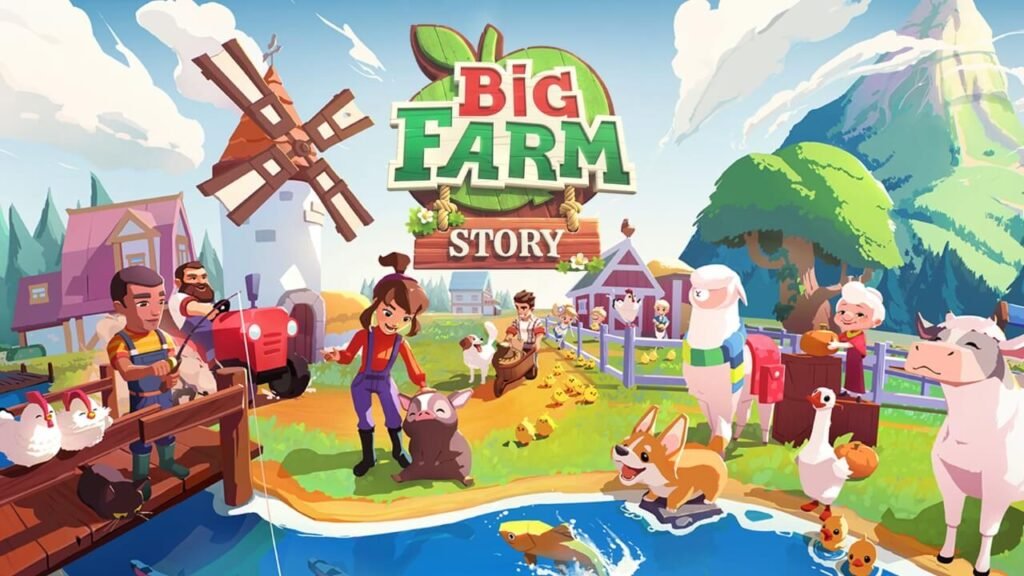In today’s rapidly evolving agricultural landscape, the concept of a big farm has transformed from simple acreage to a complex system integrating technology, sustainability, and market strategy. American farmers are no longer just cultivating crops; they are managing intricate operations that blend traditional farming knowledge with modern agricultural innovations. A big farm represents not only a significant expanse of land but also a hub of productivity, economic potential, and ecological responsibility. This comprehensive guide explores the various facets of running a big farm in the United States, emphasizing its impact on food production, rural communities, and the future of agriculture.
Understanding the Scale: What Makes a Big Farm
The definition of a big farm varies depending on context, location, and production goals. Typically, a farm spanning several hundred to thousands of acres, employing advanced machinery, and integrating high-level management practices qualifies as a big farm. Such farms often focus on monoculture or diversified crop systems, livestock, or a combination of both. The scale allows for economies of scale, meaning that operational efficiency and cost management become significantly more feasible compared to smaller farms.
Dr. Emily Harris, a leading agricultural economist, explains, “A big farm is more than just land. It’s a business ecosystem that balances productivity, sustainability, and market responsiveness.” This perspective highlights the multifaceted responsibilities of large-scale farming and underscores the need for strategic planning and investment in modern technologies.
Technological Innovations on a Big Farm
One of the most striking features of a big farm is the extensive use of technology. Precision agriculture, for example, utilizes GPS-guided equipment, drones, and remote sensing to optimize crop planting, irrigation, and fertilization. By analyzing soil health and crop growth patterns, farmers can maximize yields while minimizing resource waste.
Additionally, automation plays a critical role in managing labor-intensive tasks. Automated irrigation systems, robotic harvesters, and livestock monitoring sensors not only reduce labor costs but also increase consistency and efficiency. Big farms in the United States are increasingly adopting data-driven decision-making platforms to track crop performance, forecast market trends, and manage supply chains effectively.
Economic Impact and Market Dynamics
Operating a big farm is both a financial opportunity and a significant economic responsibility. Large-scale farms contribute substantially to the American economy by producing high volumes of crops and livestock for domestic consumption and export. Corn, soybeans, wheat, and beef are among the primary commodities driving profitability.
However, with scale comes risk. Fluctuations in commodity prices, climate variability, and regulatory changes can significantly affect revenue. Effective financial management, crop diversification, and participation in government support programs are essential strategies for sustaining profitability. Moreover, big farms often influence local employment rates and stimulate ancillary industries, from equipment manufacturing to logistics.
Sustainability and Environmental Responsibility
Modern big farms are increasingly prioritizing sustainable practices to reduce environmental impact. Crop rotation, cover cropping, reduced tillage, and integrated pest management are among the methods employed to maintain soil fertility and biodiversity. Big farms also play a critical role in water management, using advanced irrigation techniques to conserve water resources while ensuring optimal crop growth.
Furthermore, renewable energy adoption—such as solar panels and bioenergy systems—has become more prevalent on large-scale farms. These initiatives not only reduce carbon footprints but also enhance long-term operational efficiency. Sustainability is no longer optional; it is an integral aspect of responsible big farm management in the 21st century.
Workforce and Community Engagement
A big farm is not just a physical space; it is a community hub. Employment on large farms spans managerial roles, technical specialists, seasonal laborers, and agricultural engineers. Ensuring fair labor practices, providing training opportunities, and fostering community relationships are critical components of farm operations.
Large farms also often support local economies through partnerships with suppliers, processors, and retailers. By engaging with surrounding communities, big farms contribute to regional stability and promote knowledge exchange, particularly in agricultural innovation and best practices.
Challenges Facing Big Farms
Despite their advantages, big farms face unique challenges. Climate change has introduced unpredictable weather patterns, droughts, and pest pressures, all of which require proactive adaptation strategies. Regulatory compliance, including environmental standards, labor laws, and food safety requirements, adds further complexity to farm management.
Additionally, maintaining financial sustainability in a competitive market can be difficult. While scale provides advantages, it also necessitates significant capital investment, and operational risks are magnified. Big farms must continuously innovate and adapt to survive and thrive in a dynamic agricultural landscape.
The Future of Big Farms in America
Looking ahead, the role of big farms in the United States is poised to expand. Advances in biotechnology, artificial intelligence, and robotics promise to revolutionize productivity, reduce waste, and improve decision-making. The integration of smart farming solutions will enable better prediction of crop performance and more efficient resource management.
Moreover, consumer demand for sustainably sourced, high-quality products is shaping farm strategies. Big farms that invest in eco-friendly practices and transparent supply chains will be better positioned to meet market expectations and regulatory requirements. As Dr. Harris notes, “The future of big farms lies at the intersection of technology, sustainability, and market agility.”
Conclusion: Big Farms as Catalysts for Growth
In conclusion, a big farm represents more than just land and crops; it embodies innovation, economic significance, environmental stewardship, and community engagement. From leveraging cutting-edge technology to implementing sustainable practices and navigating complex market dynamics, big farms are at the forefront of modern agriculture in America.
By understanding the scale, opportunities, and challenges of big farms, stakeholders—from farmers and policymakers to consumers—can appreciate their essential role in feeding the nation, driving economic growth, and preserving environmental resources. The big farm of today is not merely an agricultural operation; it is a symbol of progress, resilience, and the enduring potential of American farming.
